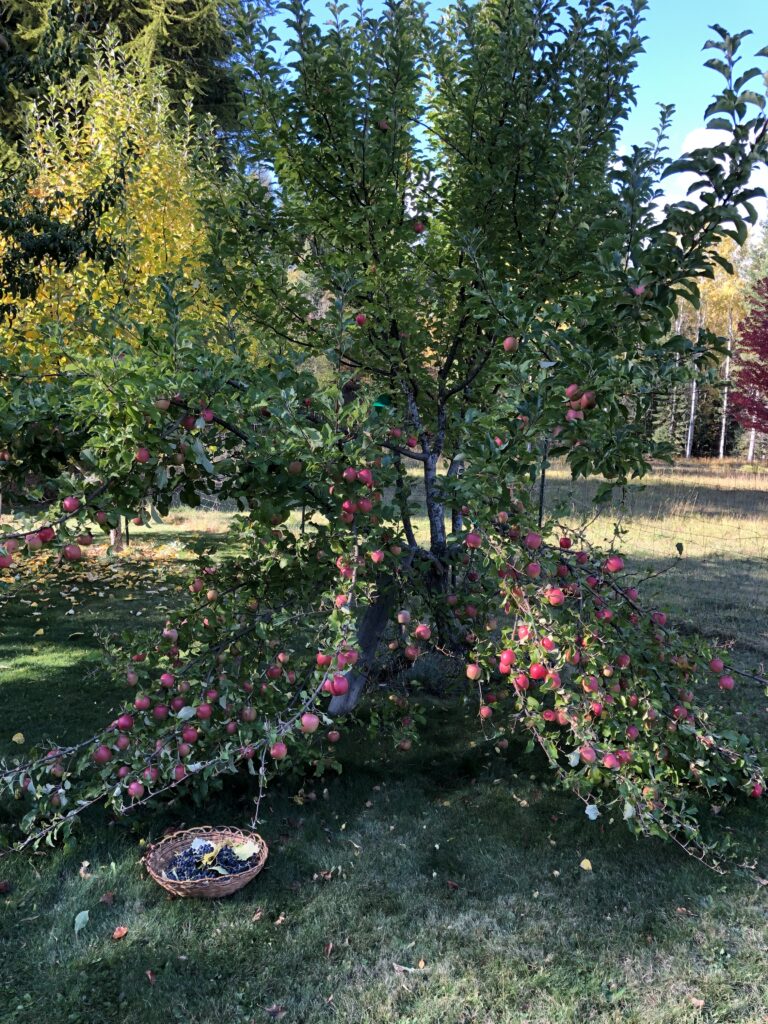Codling Moths Part 1: You Are Being Tested
There’s nothing that strikes fear into the heart of an organic gardener more than a new pest. There’s the moment you discover the interloper: “Now what the hell are you?” you say out loud, to nobody in particular, as you go through the encyclopedia entries in your mind and panic takes hold.
For me, the Codling Moth Project started after three straight years of spying some small, gross, mustard-colored caterpillars scarfing my apple trees’ leaves.
I would dutifully cut off the affected twig, stuff it into a thick, black plastic bag and dispose of it carefully, but the next year — same deal! Soon, it was entire limbs that were being damaged.
Worries lingered long after frost. You see, these little bastards can eat so much in just one hour — if you don’t see them soon enough, they can systematically denude the whole side of a tree in a day. Not cool!
For a while, I felt like I must have done something wrong to allow these horrible voracious caterpillars to appear every year and wreak havoc on my lovely fruit.
Were they imported in the bark I use on the adjacent blueberries?
Is obvious climate change introducing new pests?
Did they hitchhike in on a young tree from a nursery?
No matter, they find my orchard nurturing and pleasant — a great place to bring up several thousand larvae and subsequent generations of younguns.
Scary enough — but here is where I drew the line in the sand: In October, I bit into a beautiful Pink Lady apple to discover some disgusting tunnels filled with OMG wriggling caterpillars and some funky stuff that I could not explain.



The rudeness of beautiful apples, blushed pink and brimming with promise being defiled made me upset for months, especially when I saw that the problem was getting worse.
I had to figure out how to restore my beautiful Pink Lady apples to their pristine state of beauty and health. Not only that — I had to protect the Transparent apple and the red and green pears, which were showing damage, too.
Know Thine Enemy
When I realized that what I had seen in my garden was indeed a fresh hell and resolved to identify it scientifically. But that’s not always easy. Even after perusing the insect field guide until I got the heebie jeebies, I still wasn’t sure which little brown moth was making me so unhappy.
So, I took one of those twigs to the University of Idaho Agricultural Extension in a Ziploc bag and one of the Horticulture and Small Farms experts told me definitively.
Cydia (Laspeyresia) pomonella. There it is. AKA the Codling Moth.
Mystery solved.
It’s Complicated

After I got done obsessing about how it should be pronounced CODE LING because of the spelling, I embarked on a journey.
This particular pest is a multi-dimensional changeling nightmare that is going to take a while to explain. The name makes it sound like the sort of pest you need to hold close and take care of. To baby. To indulge and check in on.
Little did I know how true that is. Eradicating codling moths organically is a years-long commitment.
Organic As All Get-Out
Of course the only pest control methods I consider are organic — I am serious about this and don’t allow any pesticides or herbicides at Double Decker Farm, obviously.
Sometimes I forget to say this because anything else is patently ridiculous.
Maybe there is some so-called magic chemical bullet out there, but I’m not interested because I know someone (bees, butterflies) or something (our immediate environment and the next generation) will be hurt by that.
My bet is it won’t be Monsanto or Dow chemical.
You know I’m on the side of the bees and Nature each and every time. And you should be, too. It’s our only hope and you know what else? It is the right thing to do. DO NOT SPRAY PESTICIDES. DO NOT SPRAY HERBICIDES. It is disrespectful and foolhardy.
Brace Yourself
To obliterate codling moths, you will need to dig deep and start reading books. Then read some more online. Then consult others.

Amateur mistake #300. Too many apples, not thinned. Also they are too close to the ground, inviting infestation. The two lowest limbs in this shot were subsequently removed in Spring 2023 for codling moth and mowing reasons.
This should be followed by more sessions of consulting with real life people, preferably Old Timers if you are lucky enough to know some.
You will need to spend money you don’t have. You will end up spraying trees in a lightning storm and getting a new category of OCD surrounding whether it is 62 degrees at night yet or not.
And maybe, just maybe, you will kill them off. But I’m not sure yet — I am only a couple of years into researching it and only halfway through the first season of battle.
Stay tuned.
LINKS TO EXPLORE:
Controlling Codling Moths Organically (Video)
A General Overview of Codling Moths
Springtime Codling Moth Control Protocol
A Note About Good Orchard Hygiene
I do clean up all fruit off the ground in the orchard religiously and keep them picked up no matter what: the reason is not limited to codling moths.
Bald-faced hornets love to latch on to a downed apple with a hundred friends and then defend that puddle of mush with aggressive dive-bombing. Not familiar?
Check out my blog from last season, Nothing to Trifle With: Bald Faced Hornets.

